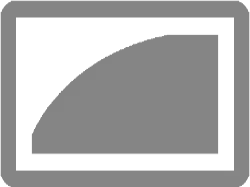I've just created a FuryBSD USB stick and am wondering where all the space went...
Code:root@Vbox:~/Downloads# gpart show da0 => 3 2955503 da0 GPT (7.3G) [CORRUPT] 3 29 2 freebsd-boot (15K) 32 48 - free - (24K) 80 1600 1 efi (800K) 1680 2953826 - free - (1.4G)
Is it possible boot from the iso image if copied to a partition on a hard disk?
See the description of the recover command in gpart(8):
Code:
recover Recover a corrupt partition's scheme metadata on the geom
geom. See the section entitled RECOVERING below for the
additional information.
The recover command accepts these options:
-f flags Additional operational flags. See the section
entitled OPERATIONAL FLAGS below for a
discussion about its use.
...
RECOVERING
The GEOM PART class supports recovering of partition tables only for GPT.
The GPT primary metadata is stored at the beginning of the device. For
redundancy, a secondary (backup) copy of the metadata is stored at the
end of the device. As a result of having two copies, some corruption of
metadata is not fatal to the working of GPT. When the kernel detects
corrupt metadata, it marks this table as corrupt and reports the problem.
destroy and recover are the only operations allowed on corrupt tables.
If one GPT header appears to be corrupt but the other copy remains
intact, the kernel will log the following:
GEOM: provider: the primary GPT table is corrupt or invalid.
GEOM: provider: using the secondary instead -- recovery strongly advised.
or
GEOM: provider: the secondary GPT table is corrupt or invalid.
GEOM: provider: using the primary only -- recovery suggested.
Also gpart commands such as show, status and list will report about
corrupt tables.
If the size of the device has changed (e.g., volume expansion) the
secondary GPT header will no longer be located in the last sector. This
is not a metadata corruption, but it is dangerous because any corruption
of the primary GPT will lead to loss of the partition table. This
problem is reported by the kernel with the message:
GEOM: provider: the secondary GPT header is not in the last LBA.
This situation can be recovered with the recover command. This command
reconstructs the corrupt metadata using known valid metadata and
relocates the secondary GPT to the end of the device.
NOTE: The GEOM PART class can detect the same partition table visible
through different GEOM providers, and some of them will be marked as
corrupt. Be careful when choosing a provider for recovery. If you
choose incorrectly you can destroy the metadata of another GEOM class,
e.g., GEOM MIRROR or GEOM LABEL.In your case call the following for repairing the [CORRUPT] GPT partition scheme and by this reclaiming the space of your memstick:
# gpart recover da0

